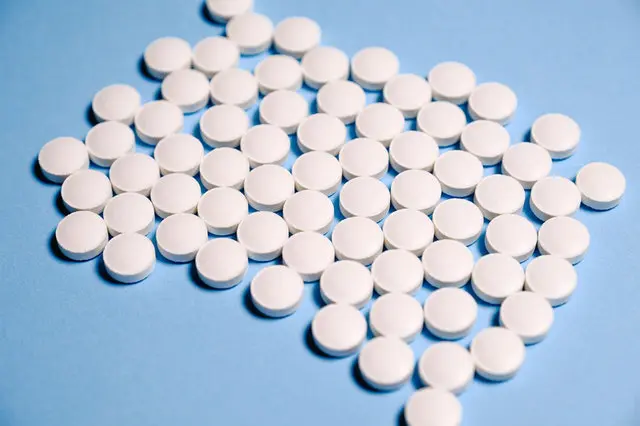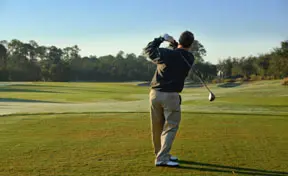Does your back feel stiff after a round of golf or a day at the driving range? Or worse yet, do you take aspirin before you play a round in anticipation of the pain you know is coming?
If so, you are on your way to hanging up your clubs someday, which will come sooner, rather than later. Did you know that the number one disability that forces players to retire from the pro tour is low back pain? Consider this quote from PGA tour pro, Casey Paulson, “The guys out here do the things they need to do to keep their back from being an issue. They take care of their bodies. You can’t play this game very well if you are hurting.”
We certainly are able to twist our shoulders without our hips, however, this repeated motion eventually takes its toll on our “discs,” causing inflammation in the short term and full degeneration over time.
If the problem is treated early in the minor inflammation stage, you can expect a full and speedy recovery. However, if it’s not, you can expect increasingly serious consequences as time goes on and irritation persists.
Your body is smart enough to try to compensate for this tender area. You may find that you lean slightly to one side or that you don’t quite stand up straight. You may drop one shoulder slightly or stand with uneven hips. How your body responds really depends on where your pain is and any other problems you may have that are already being compensated for.
As time goes on and if the irritation persists (like you’re going to stop playing golf), the muscles and ligaments in our back begin to “accept” this new compensated posture as normal. They constrict and stretch to their new relaxed positions, and this becomes your new natural posture.
You can see how this becomes a snowball effect. The irritation and inflammation continue; the body continues to make more drastic compensations, and the posture that your body accepts as “normal” continues to become more and more disfigured.
All the while, of course, your golf game continues to suffer. Maybe you don’t go downhill right away, but it begins with a serious performance plateau. How can this body continue to produce an improving game? The body’s “range of motion” and “balance” are seriously hampered. The smooth, fluid motions that are required for a good golf swing are interrupted by “kinks” in the system.
All of these problems don’t even factor in the requirement for power in the swing. When you apply thrusting power into this flawed system, the power won’t flow along the ideal path. Are you transferring power from one muscle to the next at the proper time? There are so many subtleties that can affect a golf swing.
Now factor in the most obvious and destructive component of your swing – PAIN. Nothing diverts your concentration like the anticipation and sensation of pain. Do you stop short on your backswing or your follow-through? Do you tighten up just as your club strikes the ball? People respond to it differently. But one thing is for sure; it will mess you up!
It’s not uncommon at this point for players to literally give up the game for a whole season or even longer, while they wait for their backs to heal. By stopping the irritation, the inflammation will eventually subside. The pain will lessen or possibly go away altogether. But one thing that won’t change on its own is the body’s new “normal” posture. The compensations that the back made to deal with the pain are now held in place by the muscles and ligaments. It’s the new you, ready to take up with new problems when you head back out to the golf course.
To finish our worst-case timeline, the die-hard, play-through-the-pain golfer will continue to aggravate that problem disc until it literally disintegrates. At this point, the pain is chronic and almost unbearable. He will most likely have to endure back surgery to fuse the vertebral bones. Talk about a range of motion problem then! It’s best to avoid this phase.
What can you do about it, you ask? Consider this quote from Rocco Mediate, “Without Chiropractic, I’d be a mess. I don’t know how I’d survive without them. The swing is a very unnatural motion – one that repetition hurts a lot more than it helps.”
Chiropractic can treat your pain and correct your posture effectively. I would argue that “enabling” your body is far more important to your golf performance than any new piece of equipment you could buy.
Dr. Jeff Hogan is available for further comment, workshops, lectures, and personal consultations. He can be reached at his office, Hogan Spine & Rehab, at 281-240-2225. You are invited to call and request his free special report, “Hit Farther, Straighter, and Play Longer.”



